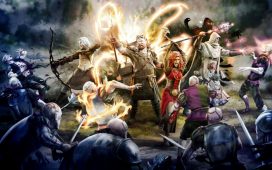
Every month the team at Creative Assembly debunks some common dev role myths. This month, Elliot Maren, lead animator, looks to the future of animation, and why motion capture isn’t boring
The quality of animations in games just keeps getting better and better. I feel this is a reflection on the rising importance being given to animations in development. And rightly so.
First, creating the illusion of life requires an awful lot of subtle details. Crafting such detail takes time. Secondly, giving a fresh and satisfactory feel to the players requires a lot of trial and error, this takes time as well. It’s crucial that we create memorable characters, scenes and experiences.
Of course, technology plays an important role in recent developments, and this will very much dictate the future of the animation industry. Technology (both hardware and software) keeps evolving and improving very quickly.
At Creative Assembly we are playing our part, pushing the animation quality up within the constraints we have (technology and gameplay). While this can be difficult and frustrating at times, it’s a very fun challenge to have.
Total War: Warhammer is one of those gold nuggets of a project where you can learn tremendously by animating all sorts of creatures. For example, we’ve given life to 266 skeletons (and counting), challenging ourselves and having fun trying to give a distinct look and feel to all of the different factions, races and units.
As technology evolves, specialisms and human-driven detail also become more important. A myth we often hear in the industry is that ‘movies have better animations than video games’.
My argument is that the lines are starting to blur more and more (the latest God Of War is a good example) but in general, our needs are very different. The film industry works in cameras so they can polish to an extreme level a single view. On top of that, you add lighting, simulation, rendering/compositing, and you reach a level of embellishment that real-time rendering can’t yet achieve.
“As technology evolves, specialisms and
human-driven detail also become more important.”
Most games must create animations that look great from every camera angle and from all distances. Compare it to a painting and a sculpture; now picture yourself trying to make them move and you’ll get the main constraint differences.
Something I hear comments about how ‘motion capture is boring’. Maybe this is true when you receive data that was already shot and directed. When you plan and direct a shoot for your animations (we’ve got the luxury of using our own motion capture facility), it becomes a fun tool that brings you 80 per cent there. We never use motion capture raw and are always pushing it massively. You need to be a good animator to be able to really use the mocap data in the way you want and add that little extra that will sell your action in every scenario. But of course, hand-keyed animation can be more fun and challenging.
Lastly, when speaking to students about game development careers, I often hear that ‘you need to be able to draw to be an animator’. Well, this isn’t actually that clear cut. When you are using a visual language, you communicate your ideas much faster. That doesn’t mean you need to be a great at drawing but being able to quickly put your ideas on paper is a massive help.
I’m really looking forward to seeing how animation progresses in the industry over the next few years. A recent study in the UK found that animation is one of the most promising digital skills of the future, with more and more opportunities for specialising.













